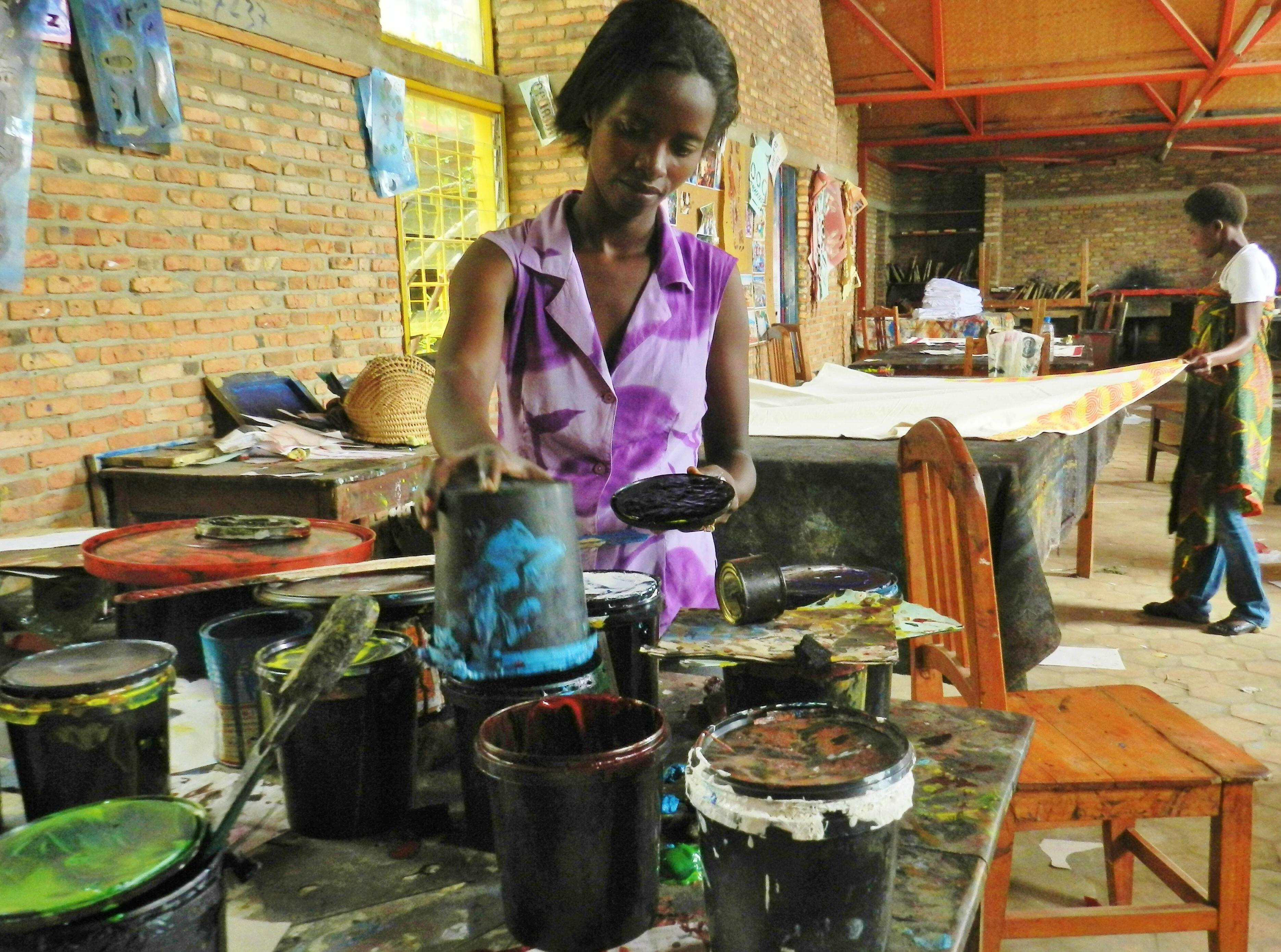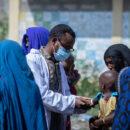Back to Musaga: Post-war Burundi, seen from the hood – By Kris Berwouts

I was invited to visit Musaga by a woman who has lived and worked in Bujumbura for several months – in the Centre Artisanal de Musaga (CAM), where seventy women had started a project to produce clothes, pottery and jewelry. My friend’s contribution had been to start a social restaurant. “Come and enjoy one of our meals,” she had said, “you can eat for less than 50p.” Myself and Musaga have our own history, going back several years, so I was happy to accept the invitation.
Musaga 1994: a baptism of fire
Bujumbura was my first stop in Central Africa in December 1994. Fourteen months before that, the country fell in into an open civil war after the assassination of Burundi’s first democratically elected president, Melchior Ndadaye. One part of Ndadaye’s political movement Frodebu, with a predominantly Hutu membership, decided to take up arms to restore democracy. The national army, dominated by radical Tutsi, reacted extremely violently, as it had done under the previous regimes. The population found themselves caught in the middle of this spiral of violence.
In those days I worked for an international peace movement called Civil Service International and my trip to Burundi was the start of a long collaboration with Burundian youth associations. We worked on techniques to restore confidence between people and groups in a society that had become totally polarized. Sensitive methods and tools were required to discuss the most delicate themes. Later on, we brought Burundian youth leaders to Northern Ireland to learn from colleagues there, and we brought an Irish trainer in conflict management to Bujumbura. But this was only the first mission and a huge part of the hills and hoods had been ethnically purified in the previous fourteen months.
The same thing happened in Musaga. Historically, the neighbourhood had been mixed (but predominantly Tutsi), and a few weeks after Ndadaye’s death, all the Hutu of the community had been chased out. Dotted all over the nieghbourhoodhood stood the remains of their burned-down houses. The lucky ones had been able to escape, empty handed. The others probably still lay under the debris. The neighbourhood had turned into a fortress of Tutsi radicalism.
My friend Dismas lived there. Dismas was a mild lad with a big heart and an open mind who was a leader in the scouts. “Kris, why don’t you stay in my house? I can put you in a hotel in the city center, but the security is deteriorating there. And it is so anonymous if something would go wrong… In Musaga where I live, things are safe for the time being. No incidents in the last months. We prepare a room for you at home.”
How safe can you be in a civil war? Musaga is the most southern suburb of town, bordered by the hills of Bujumbura Rural, which were controlled by the rebels. During my fourth night there a group of rebels came down from the hills and attacked the neighbourhood. Machine guns rattled for hours. I heard the detonation of my first grenades. The neighbours of the neighbours were slaughtered with machetes. Ten people were killed in Musaga that night.
Over the following days, militia made up from extremist Tutsi youngsters with combative names such as “Sans Défaite” and “Sans Echec” organised an “Action Ville Morte” all over Bujumbura. This included raids on the market and other public places. Here and there in the ditches lay the bodies of slashed people. This was my first week in the Great Lakes and I never returned to Musaga. Not that I was traumatised, but it is simply one of those places where you never had to be.
A war without winners
I don’t intend to summarise the recent history of Burundi here. I tried to do that on African Arguments in June. But today is exactly eighteen years from my first visit, and in most of those years I visited Burundi at least once, but this is the first time I’ve been back to Musaga.
The people of the Centre Artisanal show me the different workshops where they design and paint the patterns on the tissue, where they cut and sow the clothes and the curtains, the sheets and the cushions. We end the visit in the restaurant. It’s quiet, but not too run down. It is January, they explain – everybody has spent his or her last francs for Christmas and New Year, so there no more budget left for restaurants and other inordinate extravaganza. Not even at the democratic price of 40 pence for a meal.
I talk with two people from the team. Both of them have lived for a long time in Musaga. Julienne is the centre coordinator and was one of the founding members of the CAM in 1986. But after the murder of Ndadaye in October 1993, all hell broke loose in Burundi. The Tutsi were the majority so Hutu had to disappear. “Before the end of the year, they had forced us to leave our house and the neighbourhood. I couldn’t even come here anymore to work in the Centre Artisanal. So we moved to a neighbourhood where the Hutu were [in a] majority, and where their radicals had smoked out the Tutsi. We lived in Kamenge for a decade”.
Edouard, who now creates the designs for the textiles, was only 13 in 1993. As a Tutsi, he was able to stay in Musaga. “We all felt connected here, we felt part of one community. I think we would have been able to remain calm here, but things immediately deteriorated when other Tutsi joined us. They had left their homes upcountry, many of them had lost everything: their family, their houses, their cattle.” They were very bitter and scared – many people became radicalized very quickly and the neighbourhood was controled by the extremist youth militias. They made road blocks and killed every Hutu. Even those who didn’t want to enter Musaga but only passed on the road here to sell their fruit and vegetables in the city center. You immediately felt the difference in the markets.”
“For the rest of the nineties, we couldn’t even dream of showing our face in Musaga,” Jullienne added. “It improved with the peace talks and the Arusha Agreement in 2000. When the rebels and the army of the previous regime integrated in a new national army in November 2003, things suddenly moved faster. People started to visit the hood to see the state of their houses. To see what was left of it. We opened CAM again very soon after that. And I came to live here again. Well, not in Musaga itself, but in Kanyosha, a bit further down the road.”
“How do you do that?” I wanted to know.
“Your neighbours try to kill you, chase you out of the neighbourhood as if you were dogs and destroy your goods. But a few years later, there you are again. How do you look each other in the eyes again? How do you start to build a new life together?”
“This went smoother and faster than we had expected,” clarifies Julienne.
“It had been a Tutsi neighbourhood, but not all Tutsi were radicals. Some of them had protected us, sometimes taking serious risks themselves. They had hidden us, or warned us when an attack was prepared. They helped us to escape. And as far as the others are concerned… When we came back here in the neighbourhood, we had nothing. We saw that our slaughterers had lost everything too. They had lost a lot of their beloved too. We all came impoverished and damaged out of this war without winners. To realize this helped us turn the page.”
Truth and peace
“Step by step, daily life normalised,” Edouard remembers.
“The former rebellion won the elections. That was important for the self-esteem of the Hutu. All of a sudden, they were the ones to lead the game. Also in Musaga, many Tutsi joined CNDD-FDD. Party membership cards have always been much more important than capacities and skills if you want a job in this country. That isn’t democratic, but at least now it helps to break down the barriers between the two communities.”
“[Is there] a fear that one day the hate between Hutu and Tutsi will flare up again in Musaga or elsewhere in Burundi?”
“No way!,” they yell together.
“The society is organized in a very different way now. The political arena is no longer a question of ethnic background but of political parties.”
“Not that Musaga is free of violence today. Certainly not,” says Edouard.
“The Imbonerakure, the youth league of the ruling party, imposes here, as in many other places, their version of law and order. They nearly function as a parallel power to the police. You better not become known as an FNL or MSD militant, because that would certainly mean you will be intimidated, harassed, arrested or even killed at some point. But now it effectively is the majority who govern, power is dominated by the law of mathematics. It is extremely unlikely that Tutsi with their 15 percent of the population will deliver the president in the next generation. The ultimate struggle for control of the state becomes intra-Hutu competition. That is why repression is most harsh against the FNL. It is them that CNDD-FDD fears most of all. And since Musaga [still] counts more Tutsi than Hutu, repression is not so hard here than for instance in Kamenge, which kept an overwhelming Hutu majority.”
Julienne went back to her office, but I have one last question: “What do people expect here in Musaga from the Truth and Reconciliation Commission which presumably will be set up very soon?”
Edouard looks at me, with a penetrating gaze: “Burundians and truth, that will never be a simple story. We know the truth. We know who has killed. We were there. We remember everything much [better] than we want to. But we are afraid to speak the truth. Because we’re scared. Afraid that the fragile peace we have now might come under pressure or even disappear if we start digging too hard into the past. Because, if there is one lesson we have learned in all those years, it is this: in this country, wars only have losers.”
Kris Berwouts has, over the last 25 years, worked for a number of different Belgian and international NGOs focused on building peace, reconciliation, security and democratic processes. Until recently, he was the Director of EurAc, the network of European NGOs working for advocacy on Central Africa. He now works as an independent expert on Central Africa.







[…] Back to Musaga: Post-war Burundi, seen from the hood – By Kris …Dec 16, 2000 … Against a historical background of decades-long ethnic hatred and major outbreaks of strife, Burundi’s Hutu and Tutsi tribal factions plunged … […]